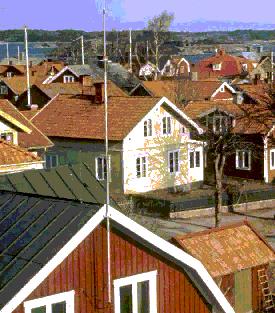| Group | Germanic (with German, English, Dutch etc.), North Germanic (with Danish, Icelandic etc.) |
| Geography | Sweden, western Finland and the Aland islands |
| History | Swedish is an eastern development of the Old Norse language. The Swedish branch of this common tongue developed into a separate language during the period 900-1500 and is called Old Swedish. Until after 1200 the only records of the language are runic inscriptions, cut primarily on tombstones and memorial stones. The Latin alphabet was introduced in the 13th century; periods of further differentiation followed, and some approximation to Danish occurred. The written language, based on two of the most widely spoken dialects, was made uniform throughout all of Sweden in the 14th century. |
| Phonetics | All original diphthongs disappeared in Swedish, making it unique among Germanic languages. Its [a] is quite back, and resembles [o] very much. In unstressed syllables, pracically every vowel is possible, though they are often reduced in other Scandinavian tongues. |
| Nominal Morphology | The noun can belong to one of the two genders (common or neuter). There are several types of forming the plural, but the majority of neuter nouns does not have any plural marker. The indefinite article precedes the word, the definite one follows it, both vary in gender. |
| Verbal Morphology | Last century Sweden made a distinction between the verbal conjugation in asingular and in plural - today the verb looks the same in both numbers. Different from Norwegian and Danish, Swedish verbs have four basic forms: the infinitive, the past singular, the past plural, and the supine, though the ablaut mutations partly disappeared. The supine often coincides with the past participle, but still remains a separate form, used for constructing the perfect tenses. |
| Lexicon | The language has an anicent literature tradition, which allowed it to avoid loanwords from other languages (Daish and Low German first of all). |
| Writing | Latin alphabet |
| Close Contacts | Finnish in the Middle Ages, later Danish in Southern Scandinavia and Low German. |
| Sample | .
. |
| Picture |  |
| More info |